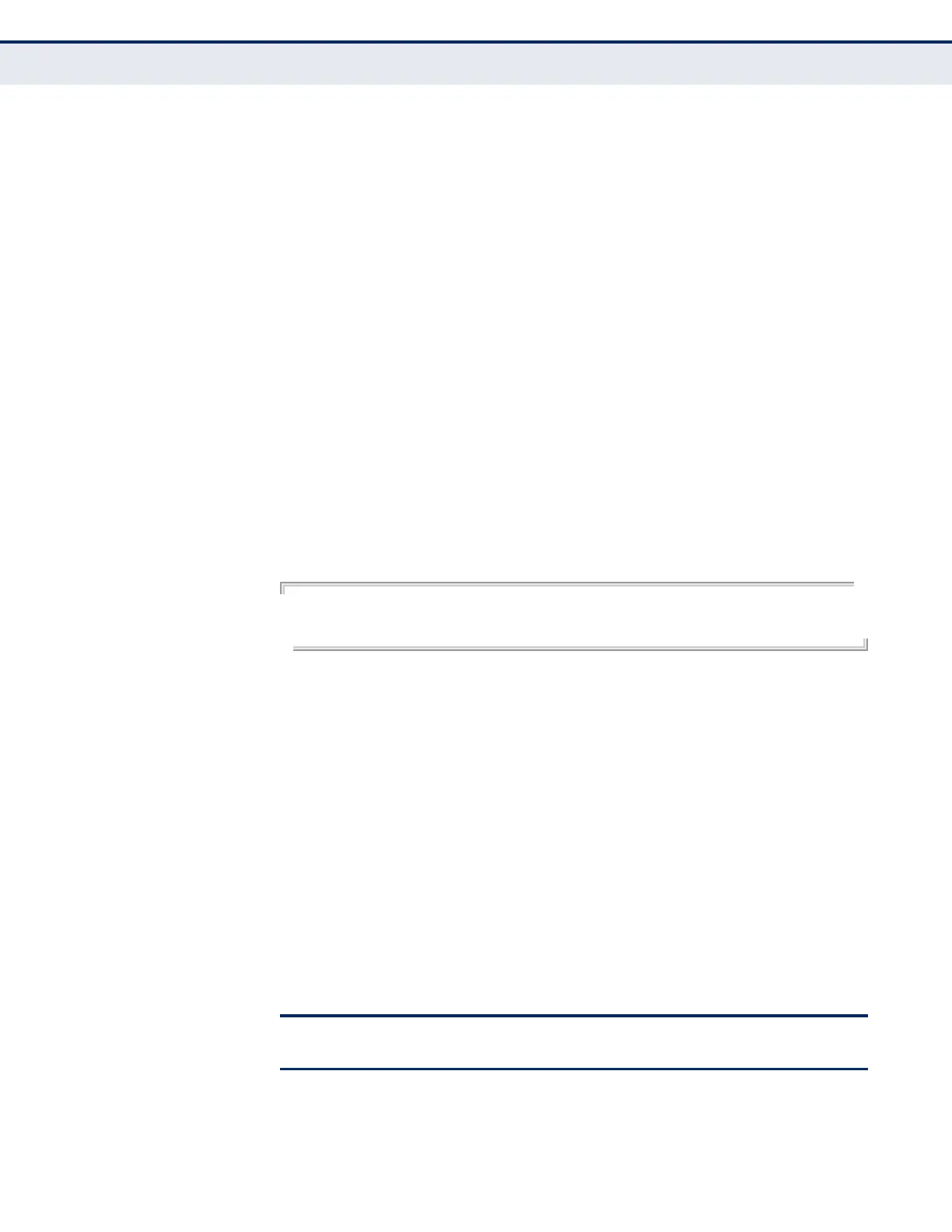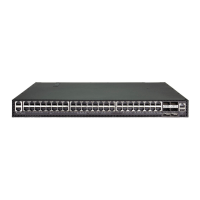C
HAPTER
36
| Class of Service Commands
Priority Commands (Layer 3 and 4)
– 1167 –
◆ This map is only used when the QoS mapping mode is set to “DSCP” by
the qos map trust-mode command, and the ingress packet type is IPv4.
◆ Two QoS domains can have different DSCP definitions, so the DSCP-to-
PHB/Drop Precedence mutation map can be used to modify one set of
DSCP values to match the definition of another domain. The mutation
map should be applied at the receiving port (ingress mutation) at the
boundary of a QoS administrative domain.
◆ Random Tail Drop is supported for the queue descriptors and buffers
only. When Random Tail Drop is enabled, the last six bits of the queue
descriptor limit and buffer limits are randomized. This allows a
simplified Random Early Discard (RED) and breaks queue
synchronization when the queue is congested due to different sources
sending packets with the same byte count.
◆ The specified mapping applies to all interfaces.
EXAMPLE
This example changes the priority for all packets entering port 1 which
contain a DSCP value of 1 to a per-hop behavior of 3 and a drop
precedence of 1. Referring to Table 147, note that the DSCP value for these
packets is now set to 25 (3x2
3
+1) and passed on to the egress interface.
Console(config)#interface ethernet 1/5
Console(config-if)#qos map dscp-mutation 3 1 from 1
Console(config-if)#
qos map phb-queue This command determines the hardware output queues to use based on
the internal per-hop behavior value. Use the no form to restore the default
settings.
SYNTAX
qos map phb-queue queue-id from phb0 ... phb7
no map phb-queue phb0 ... phb7
phb - Per-hop behavior, or the priority used for this router hop.
(Range: 0-7)
queue-id - The ID of the priority queue. (Range: 0-7, where 7 is the
highest priority queue)
DEFAULT SETTING.
COMMAND MODE
Interface Configuration (Port, Static Aggregation)
Table 148: Mapping Internal Per-hop Behavior to Hardware Queues
Per-hop Behavior 0 1 2 3 4 5 6 7
Hardware Queues 1 0 0 1 2 2 3 3

